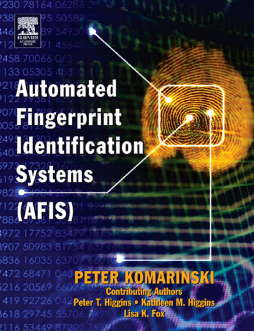
Additional Information
Book Details
Abstract
An easy-to-understand synopsis of identification systems, presenting in simple language the process of fingerprint identification, from the initial capture of a set of finger images, to the production of a Rapsheet. No other single work exists which reviews this important identification process from beginning to end. We examine the identification process for latent (crime scene) prints and how they are identified with these systems. While the primary focus is automated fingerprint identifications, the book also touches on the emergence and use of fingerprints in other biometric systems.
Criminal justice administrators, policy makers, and students of forensic science and criminal justice will find a reference to the known limitations and advantages of these systems.
This book provides information as to the critical and continual need for properly trained individuals as well as an understanding of the direct and indirect costs associated with maintaining these systems.
An understanding of the entire system and what it means will prove invaluable. Why are there missed identifications? Why are identifications made on one database that are not made on another database? Key terms and issues are included, and well as suggestions for improving the overall number of identifications.
The book will go beyond process and also discuss issues such as interoperability, management strategies for large databases, contract development, lights out verification and several other issues which impact automated identifications.
- The first comprehensive title on this subject area
- Outlines in detail the entire process of fingerprint gathering and identity verification
- The future of AFIS will is discussed, including national standards in developing multi-agency cooperation/interoperability (U.S.) in addition to the use of AFIS identification world-wide.
"This book provides a tremendous amount of valuable and practical information and guides for criminal justice practitioners, identification staff, booking officers, the courts, district attorneys, and others who depend on accurate and prompt delivery of identification information." (Criminal Justice Review)
"This easy-to-understand book presents a comprehensive overview of the automated fingerprint identification process, its characteristics, challenges, opportunities, and trade-offs." (Criminal Justice Review)
